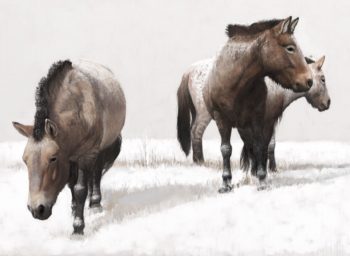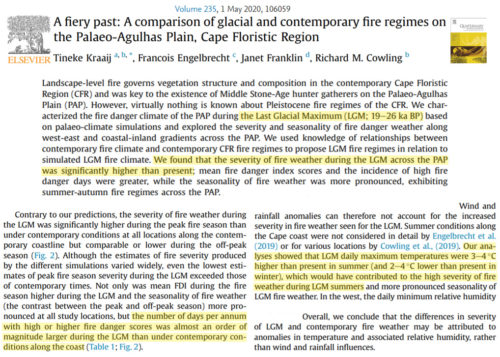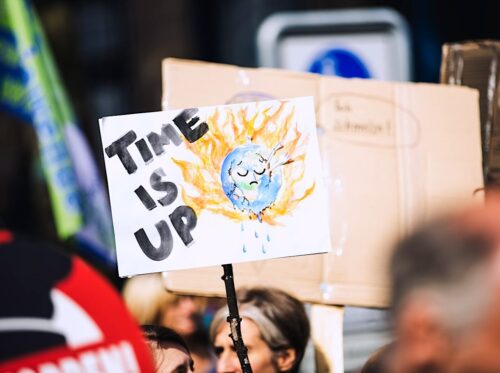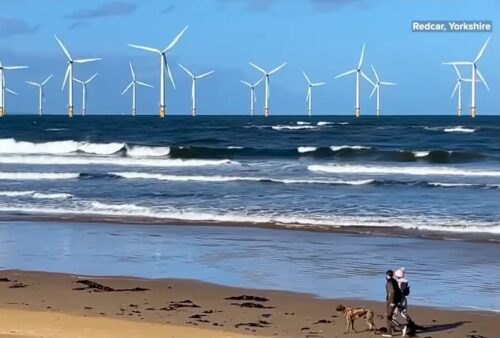
We usually assume the last glacial maximum – the peak of the last ice age – was significantly colder than it is today.
But evidence has been uncovered that wild horses fed on exposed grass year-round in the Arctic, Alaska’s North Slope, about 20,000 to 17,000 years ago, when CO2 concentrations were at their lowest and yet “summer temperatures were higher here than they are today” (Kuzmina et al., 2019).
Horses had a “substantial dietary volume” of dried grasses year-round, even in winter at this time, but the Arctic is currently “no place for horses” because there is too little for them to eat, and the food there is “deeply buried by snow” (Guthrie and Stoker, 1990).
In a new study (Kraaij et al., 2020) find evidence that “the number of days per annum with high or higher fire danger scores was almost an order of magnitude larger during the LGM [last glacial maximum, 19-26 ka BP] than under contemporary conditions” near Africa’s southernmost tip, and that “daily maximum temperatures were 3-4°C higher than present in summer (and 2-4°C lower than present in winter), which would have contributed to the high severity of fire weather during LGM summers.”
Neither conclusion – that surface temperatures would be warmer or that fires would be more common – would seem to be consistent with the position that CO2 variations drive climate or heavily contribute to fire patterns.

Read more at No Tricks Zone



















Given that it is irrefutable that it is the oceans which control the global climate and not the atmosphere, this factor is worthy of study for periods of the past when glacial maxima were oingoing. As we know that oceans today cover about 72% of the earth’s surface, this number would be not insignificantly lower during periods when polar ice expanded to lower latitudes, thereby reducing the portion of the planet covered by open sea.
Excellent article! A couple of small notes… In every glacial phase of our ongoing Pleistocene/Holocene ice age, CO2 levels drop to 180ppm. Why? Because CO2 outgasses as water warms and vice versa. This ongoing ice age marked by a one hundred thousand year cycle of glacial and interglacial phases (like the twelve thousand year Holocene interglacial we are currently in) Today we are slightly below average for the last twelve thousand year Holocene interglacial temperatures in spite of CO2 levels not seen in twelve MILLION years. In other words, CO2 DOES NOT SIGNIFICANTLY AFFECT THE CLIMATE. CO2 is however significantly higher and has resulted in a 30% greener environment, shrinking deserts, and a string of world record crop yields. Because CO2 is the basic ingredient of life on earth.
Anthropologists have been finding traces of human settlements in the North American arctic region dating back into the latest ice age. Their only explanation is that the Arctic Ocean was ice-free at the time and the route south was blocked by glaciers so the people who came across the land bridge from Asia settled in. Looks as if they’re getting some confirmation from the climatology folk now.
That ‘land bridge’ is shallow enough that in the 1920’s a proposal was put forward to build a dam across it and isolate the Arctic Ocean from The Pacific Ocean. (No mention made as to why a dam would have been beneficial considering the costs involved.)